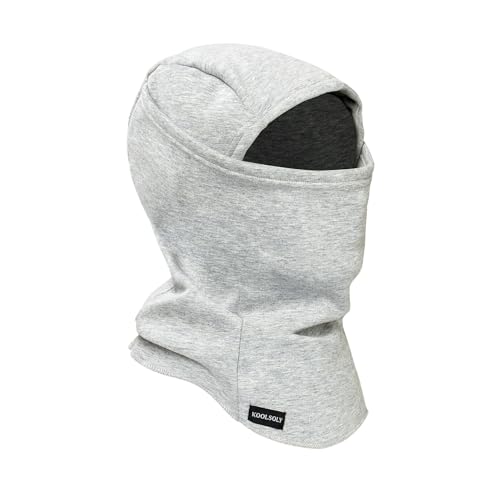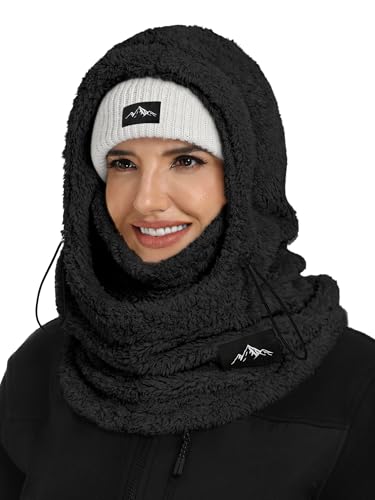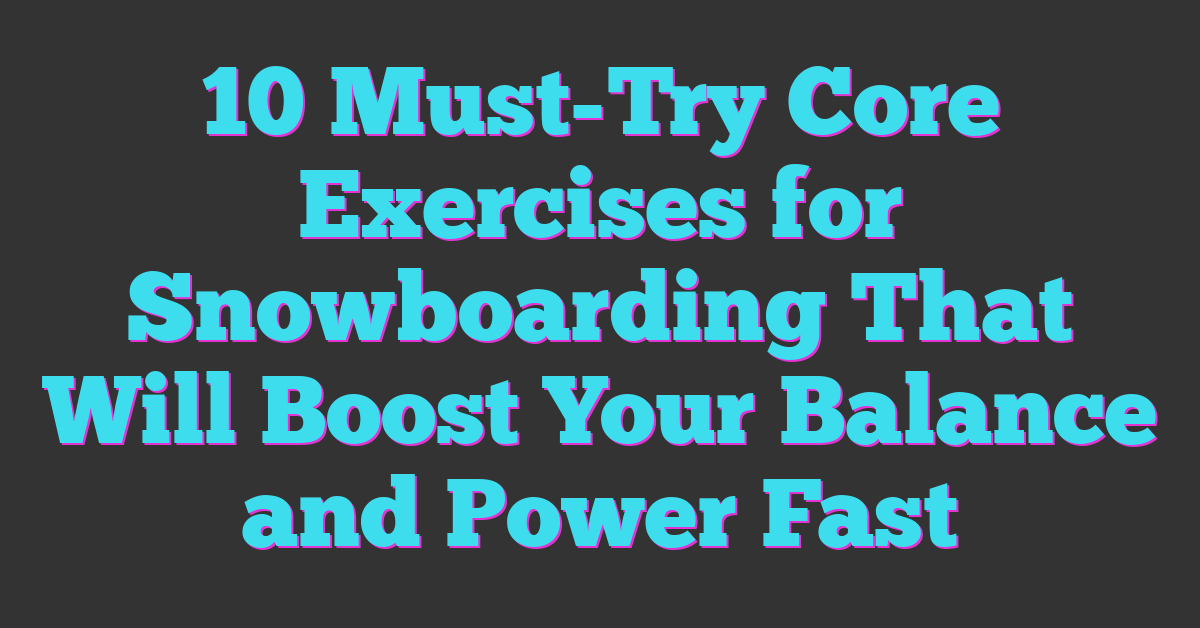If you’re looking to pick up speed on your snowboard and carve down the slopes like a pro you’re in the right place. Speed isn’t just about courage—it’s about training your body and mind to handle the rush safely and confidently.

Building your snowboarding speed takes more than just hitting the mountain faster. You’ll need to focus on improving your balance strength and technique to glide smoothly and maintain control at high speeds.
Understanding Snowboarding Speed
Mastering snowboarding speed means understanding what influences it and why training matters. You need to know how factors like terrain and technique affect how fast you glide down the mountain.
Factors That Affect Speed
Terrain type heavily impacts your speed. Smooth, groomed runs let you pick up velocity quickly, while moguls and powder slow you down. Snow conditions play a role too; hard-packed or icy surfaces give less resistance, increasing your speed, whereas fresh powder adds drag.
Your body position changes your aerodynamics significantly. Leaning forward with a low stance reduces air resistance and improves balance. Board choice matters as well—longer, stiffer boards offer more stability at speed, letting you ride faster with control.
Weather affects you more than you think. Wind direction and strength can either push you forward or hold you back. Temperature influences snow texture, which in turn shifts friction levels on the board’s base.
Importance of Speed Training
Training for speed prepares your body and mind to handle high velocity safely and confidently. It boosts your balance and core strength, essential for maintaining control when you hit fast runs. Practicing dynamic turns and edge control lets you respond quickly to changes in terrain and conditions.
Speed training also helps you manage adrenaline. Getting comfortable with your limits reduces fear and hesitation, making your rides smoother and more enjoyable. Regular drills that simulate fast conditions build muscle memory, so you react instinctively instead of overthinking.
Essential Physical Conditioning
Developing your physical fitness plays a crucial role in reaching faster speeds on your snowboard. Focusing on targeted exercises boosts your strength, balance, and agility, which all contribute to strong control during daring runs.
Strength Training for Speed
Building lower body and core muscles enhances your power and stability on the board. Squats, lunges, deadlifts, and leg presses target your quads, hamstrings, glutes, and calves—all essential for explosive movements and maintaining edge control. Planks, Russian twists, and hanging leg raises engage your core, helping resist forces during high-speed carving. Incorporate plyometric exercises like box jumps and jump squats to improve fast-twitch muscle response. Train your upper body with push-ups and pull-ups to support your shoulders and arms, improving your overall posture and balance during aggressive descents.
Improving Balance and Agility
Sharp balance and quick reflexes keep you upright and responsive while charging downhill. Use balance boards, BOSU balls, or stability discs to simulate uneven terrain and challenge your core stability. Single-leg stands and dynamic movements like lateral hops refine your proprioception and coordination. Agility ladder drills and cone drills accelerate your footwork and change-of-direction speed, helping you adapt to sudden shifts in terrain or snow conditions. Fine-tune your reaction time with quick step drills or partner ball tosses, essential for navigating obstacles with confidence at top speeds.
Technique Tips for Increasing Speed
Mastering your technique unlocks faster runs while keeping control and confidence. Focus on refining body positioning and turning skills to slice through the snow with precision and momentum.
Proper Body Positioning
Keep your knees bent and weight centered over the board’s middle to absorb terrain changes smoothly. Lean slightly forward, not rigid, to maintain balance and reduce air resistance. Use your shoulders and hips to align with your board’s direction, creating a streamlined profile. Tuck your arms close to avoid drag and stay relaxed to respond quickly to shifts in speed or surface. Maintaining this stance maximizes control as speed climbs.
Efficient Turning and Carving
Carve clean turns by applying pressure on your toes or heels while rolling your board’s edge into the snow. Initiate turns with your lower body, letting your legs guide the board while your upper body stays quiet and steady. Focus on long, smooth arcs instead of short, choppy movements to preserve momentum. Sharpening your carving technique limits friction and helps maintain speed through corners, keeping you flying down slopes confidently.
Training Drills to Boost Speed
Speed on the snowboard comes from a mix of endurance, power, and agility. These training drills sharpen your physical abilities and make your rides faster and more controlled.
Interval Training on Slopes
Start by sprinting down short sections of your favorite run, then pause to rest completely for 30 to 60 seconds. Repeat this 6 to 10 times to build explosive speed and quick recovery. After several sessions, increase the sprint length or reduce rest time to push your limits. This method improves your ability to maintain high velocity and recover quickly between fast runs.
Resistance and Plyometric Exercises
Incorporate resistance training to strengthen your legs and core, essential for powerful, stable movements. Use weighted squats, lunges, and deadlifts with 3 sets of 8 to 12 reps. Add plyometric exercises like jump squats, box jumps, and lateral bounds to enhance your explosive power and reaction time. Doing these workouts 2 to 3 times a week builds the muscle strength and fast-twitch fibers needed for rapid acceleration and sharp turns on your board.
Safety Considerations While Training for Speed
Prioritize protective gear when training for snowboarding speed. Always wear a certified helmet, impact-resistant gloves, and padded clothing designed for winter sports. Use wrist guards and knee pads to reduce injury risk during falls. Select goggles with UV protection and anti-fog lenses to maintain clear vision at high speeds.
Maintain awareness of your surroundings at all times. Check slope conditions before each session, avoiding icy patches and crowded areas that increase collision chances. Respect posted signs and stay within designated trails to ensure a controlled environment for training.
Progress your speed gradually to build confidence and control. Increase velocity only after mastering lower speeds, as sudden jumps can lead to crashes. Train with a buddy or inform others of your plan so help is readily available if needed.
Warm up thoroughly before hitting fast runs. Dynamic stretches targeting legs, hips, and core muscles prepare your body, reducing the likelihood of strains or sprains. Cool down with stretches post-session to aid recovery and maintain flexibility.
Stay hydrated and fuel your body adequately. Dehydration and low energy levels impair focus and reaction time, essential for safe high-speed snowboarding. Schedule breaks to rest and assess your condition throughout training sessions.
Pay close attention to weather changes that affect snow quality and visibility. Avoid speed training during heavy snowfall, fog, or strong winds, as these conditions compromise safety and performance. Adapt your routine to match the current environment to minimize hazards.
Conclusion
Speed on your snowboard isn’t just about pushing harder—it’s about training smarter. By focusing on your balance, strength, and technique, you’ll gain the control needed to ride faster with confidence. Remember, building your skills gradually and staying safe will make your time on the slopes more enjoyable and rewarding.
Keep challenging yourself with targeted drills and listen to your body as you progress. With consistent practice and the right mindset, you’ll find yourself carving down the mountain faster and smoother than ever before. Embrace the thrill and have fun out there!
















